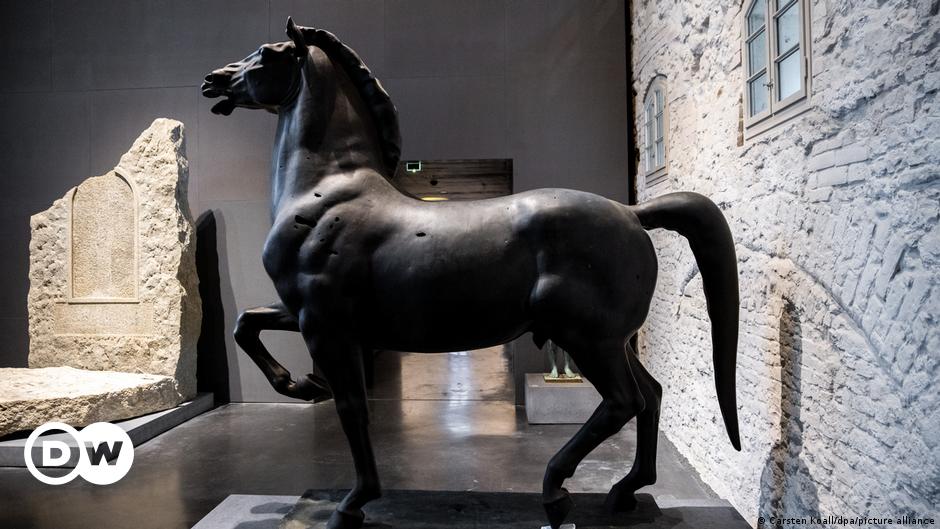In fact, plenty of [Fascist] propaganda sculptures remain in public spaces, such as in Berlin’s Olympic Stadium, commissioned by the [Fascist] régime for the 1936 Olympics. Ahead of the World Cup in 2006, for which the stadium was one of the venues, some activists called for the removal of its statues. However, the city refused on the grounds that a removal would be a denial of Germany’s history.
(Emphasis added. Compare this with the pushback against modern antifascist artwork, or, more obviously, the destruction of Communist statues, links to which you’ll probably find in the ‘EXPLORE MORE’ section.)
Further reading: Hitler’s favourite artists: why do Nazi statues still stand in Germany? ETA: Germany: Nazi-era architecture lingers today
My commentary…
You’d think that after failing to suppress so many former Axis personnel, the government would at least annihilate the Fascist aesthetics. Turns out that it couldn’t even do that right.
I stumbled upon this story while trying to do research on the phenomenon of immediately associating almost anything German with German Fascism, which I think is pretty unfair to the ordinary people living there, who quite understandingly want to be known for something far greater than that. Nevertheless, I have to admit that exceptions like these don’t really help my case.
But bring it up and you get hit with “Yeah well there are still Lenin and Stalin statues in Russia” as if the two are comparable.
We often hear about “denazification of Germany” post-war, but the more I live, the more it’s starting to look like a complete fabrication. There was no denazification. There was barely an attempt.



